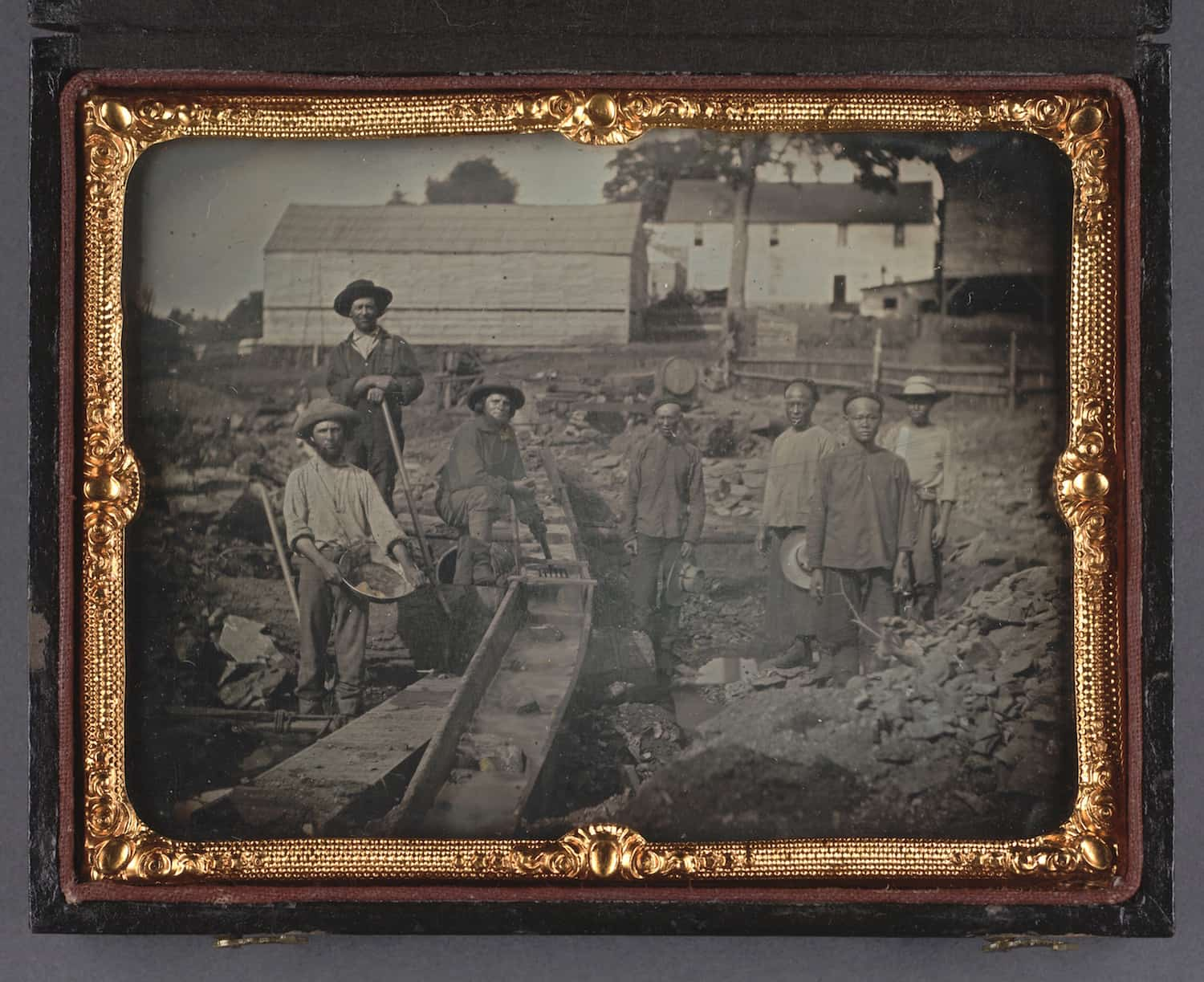Module 2: Chinese Immigration and Labor from the Gold Rush to the Golden Spike, 1849-1869
Is it possible to be both Chinese and American?
This module is about the experiences of early Chinese immigrants in the United States, focusing on their role in two pivotal events: the California Gold Rush and the construction of the country’s first transcontinental railroad. In both cases, their labor was central and valuable, but Chinese immigrants faced racial discrimination and marginalization.
In early 1848, James Marshall was building a sawmill in Coloma, California when he spotted gold along the American River. He showed it to his boss, John Sutter, in Sacramento, who tried to keep the discovery a secret, but word traveled quickly. By fall, reports and samples of the gold were submitted to Washington, DC. At the end of the year, President James K. Polk revealed the finding in his annual address to Congress, and thousands of Americans made plans to seek their fortunes in California. These gold-seeking miners became known as “forty-niners.”
The California Gold Rush (1848–1855) is commonly viewed as the origin story of the state and an important chapter in American westward expansion. The image of a forty-niner is often a rugged, bearded white American man wearing denim and carrying a pickaxe. Yet this image obscures the diverse origins of gold seekers, which also included Indigenous peoples, African Americans, Latin Americans, and Chinese immigrants.

Image 09.02.01 — White and Chinese miners at a sluice box in Auburn Ravine, California, 1852. By 1860, Chinese immigrants made up 20% of the mining population in California.
Created date, created by Name, Title Italicized. Credit line indicating where the image is from. Metadata ↗
In addition to seeking fortune, during the Gold Rush, Chinese immigrants were essential to the establishment of the country’s first transcontinental railroad. Although their labor was central and valuable to its construction, Chinese immigrants faced racial discrimination, violence, and marginalization.
What were some factors that led early Chinese immigrants to come to California and the American West?
In what ways did early Chinese immigrants build California and the American West?
What kinds of discrimination did early Chinese laborers face?








